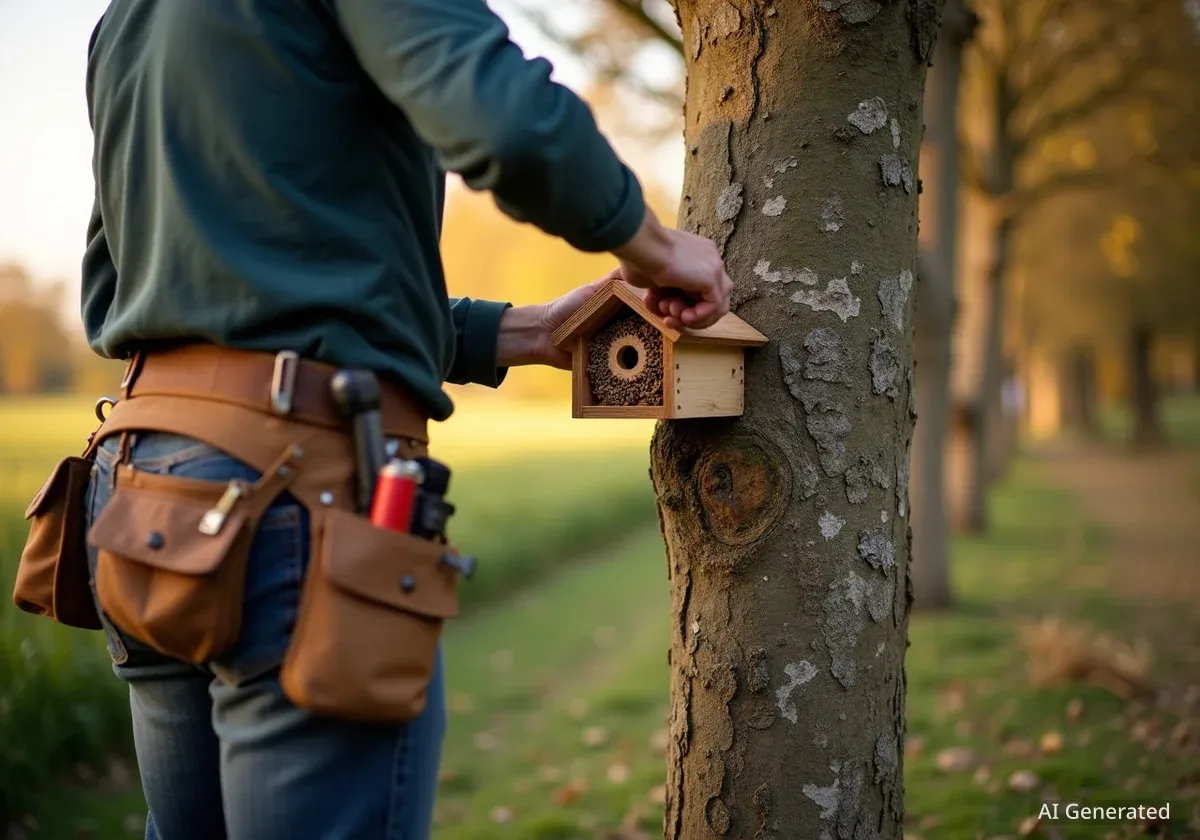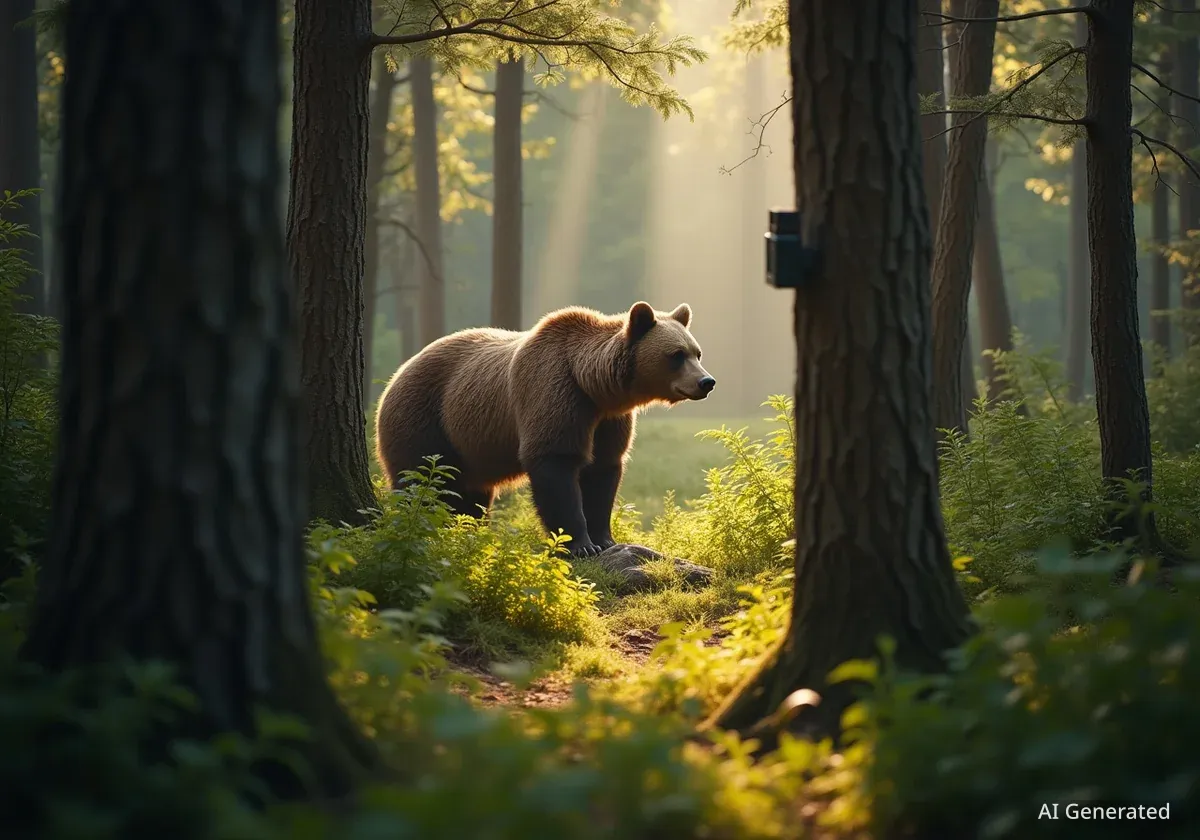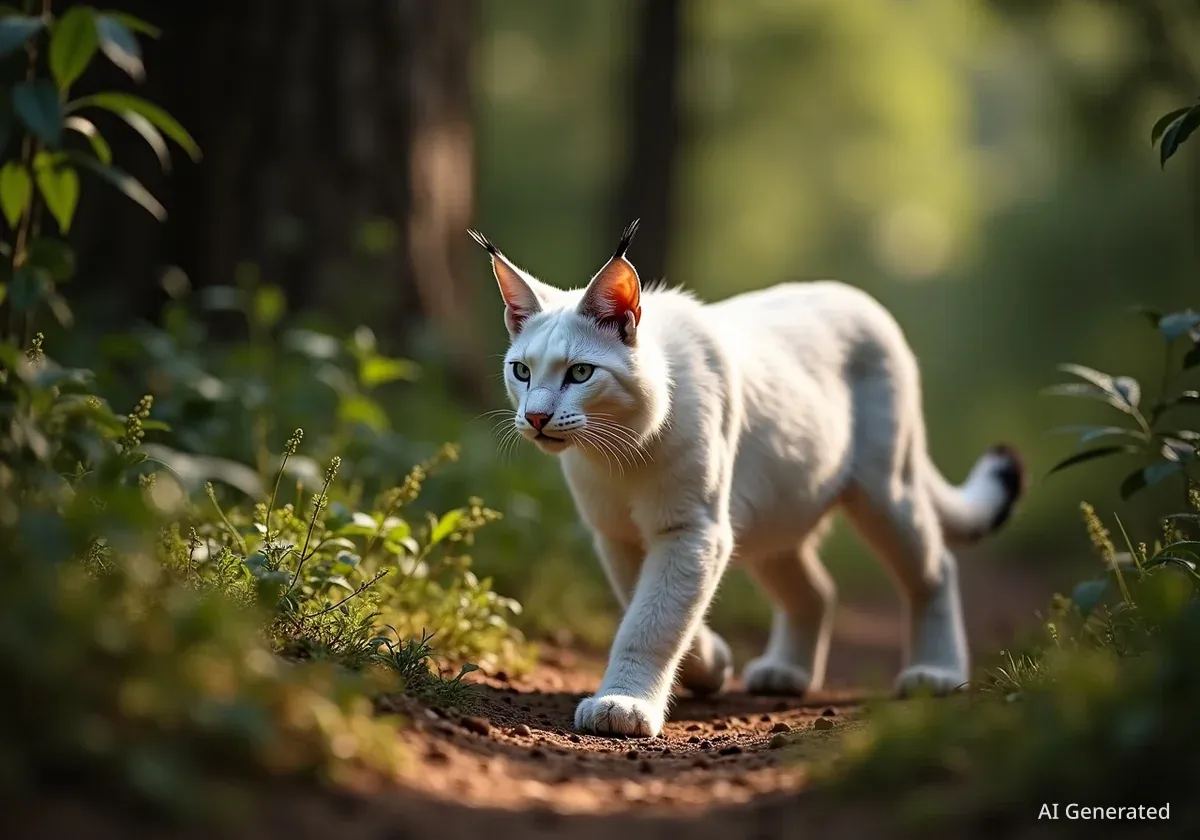Matt Somerville, a carpenter and dedicated conservationist, has spent the past 14 years constructing and installing nearly 800 homes for honeybee populations across the English countryside. His work aims to support the dwindling insect numbers, challenging traditional views on bee domestication.
Somerville, known as "The Hive Architect," believes that British honeybees can thrive independently, without constant human intervention from beekeepers. This view is highlighted in a new film by Max Weston, released by the outdoor clothing brand Fera.
Key Takeaways
- Matt Somerville has built approximately 800 bee homes in England over 14 years.
- He aims to support wild honeybee populations, which are in decline.
- A new film, "The Hive Architect," documents his unique conservation efforts.
- Somerville challenges the idea that British honeybees require domestication.
- His work involves carving logs and installing heavy structures in natural settings.
The Mission of The Hive Architect
Matt Somerville’s passion for bees is evident in his long-term commitment. He states,
"Wherever I go, bees come."This connection drives his conservation work. His efforts are particularly important given the global decline in bee populations, which are vital for pollination and ecosystem health.
The film "The Hive Architect" offers a detailed look into Somerville’s process. It shows him meticulously carving a log to create a suitable internal space for a hive. He then constructs a conical roof, designed to protect the bees from the elements.
Bee Population Decline
According to the International Union for Conservation of Nature (IUCN), approximately 9% of wild bee species are threatened with extinction in Europe. This decline is attributed to habitat loss, pesticide use, and climate change. Somerville's work directly addresses habitat loss by providing new homes.
Challenging Conventional Beekeeping
Fera, the brand behind the documentary, emphasizes Somerville’s alternative perspective on bee conservation. They note, "There is a widely held theory that our British honey bee couldn’t exist without being domesticated by beekeepers." However, Somerville strongly disagrees with this idea.
He views this theory as "ludicrous," advocating for a more natural approach where bees can establish their own wild colonies. His log hives mimic natural tree hollows, which are preferred by wild bees but are increasingly scarce in modern landscapes.
Seasonal Work and Installation Challenges
Somerville dedicates his winters to crafting these specialized bee homes. During the colder months, he works in his woodshop, producing as many hives as possible. This preparation ensures a supply of new homes for the spring.
Once spring arrives and the first flowers bloom, Somerville travels to various natural locations. These often include meadows and other bucolic settings in the English countryside. The installation process itself is a significant undertaking.
Importance of Wild Bees
Wild bees, unlike domesticated honeybees, play a crucial role in pollinating a wide variety of plants, including many native wildflowers and crops. Their genetic diversity and adaptation to local environments make them indispensable for ecosystem resilience. Supporting wild colonies helps maintain this diversity.
The hives are heavy, requiring a specialized contraption for installation. Somerville manages to rig and erect these structures entirely on his own. This independent method highlights his dedication and self-reliance in his conservation efforts.
The Craft of Hive Building
Building each hive involves significant skill and labor. Somerville uses traditional carpentry techniques, transforming raw logs into functional shelters. The design is not just practical but also aesthetically integrated with natural environments.
The conical roof, for instance, is designed to shed water effectively, keeping the interior dry and safe for the bee colonies. This attention to detail reflects his understanding of both carpentry and bee biology.
A Focus on Conservation
Somerville’s work extends beyond simply building structures; it is a direct response to a critical environmental issue. By providing safe, natural habitats, he helps increase the chances of survival for wild bee colonies.
His approach contrasts with commercial beekeeping, which often focuses on honey production. Instead, Somerville prioritizes the well-being and natural behavior of the bees themselves. This conservation-first mindset is central to his philosophy.
Pollination Services
Bees are responsible for pollinating approximately one-third of the world's food crops. This includes fruits, vegetables, and nuts. The economic value of bee pollination services is estimated to be billions of dollars annually, underscoring their importance to global food security.
Reaching a Wider Audience
The documentary "The Hive Architect" serves to bring Somerville’s work to a broader audience. Films like this can raise public awareness about environmental issues and inspire more people to consider conservation efforts.
The film's release by Fera, an outdoor clothing brand, aligns with their commitment to nature and sustainability. It showcases how individuals can make a tangible difference in environmental protection.
Further Information and Resources
For those interested in learning more about Matt Somerville’s work and his unique process, additional details are available. His website, Bee Kind Hives, provides further insights into his philosophy and methods.
Watching the beautifully shot documentary offers a visual journey into his world. It captures the essence of his dedication and the serene landscapes where he installs his bee homes. This visual storytelling helps convey the importance and beauty of his mission.
- Watch the documentary: "The Hive Architect" by Max Weston (released by Fera).
- Visit his website: Bee Kind Hives for more details on his conservation work.
- Learn about bee conservation: Explore resources from organizations like the IUCN and local wildlife trusts.
Somerville’s efforts underscore the vital role that individual action can play in global conservation. His commitment to creating homes for bees offers a powerful example of environmental stewardship.




